Jaundice disease definition. Jaundice: Causes, Symptoms, and Treatment of the Yellow Skin Condition
What are the main causes of jaundice. How is jaundice diagnosed and treated. Can jaundice be prevented. What are the symptoms of jaundice in adults and children. When should you seek medical attention for jaundice.
Understanding Jaundice: The Yellow Warning Sign
Jaundice is a condition characterized by the yellowing of the skin, mucous membranes, and the whites of the eyes. This distinctive coloration stems from elevated levels of bilirubin, a byproduct of old red blood cell breakdown, circulating in the bloodstream. While jaundice itself is not a disease, it serves as a crucial indicator of underlying health issues, particularly those affecting the liver, gallbladder, or pancreas.
The severity of jaundice can vary, with moderate bilirubin levels causing a yellowish tinge and higher levels potentially leading to a greenish hue. This green coloration is due to biliverdin, a green pigment found in bile. Understanding the nuances of jaundice is essential for early detection and proper medical intervention.
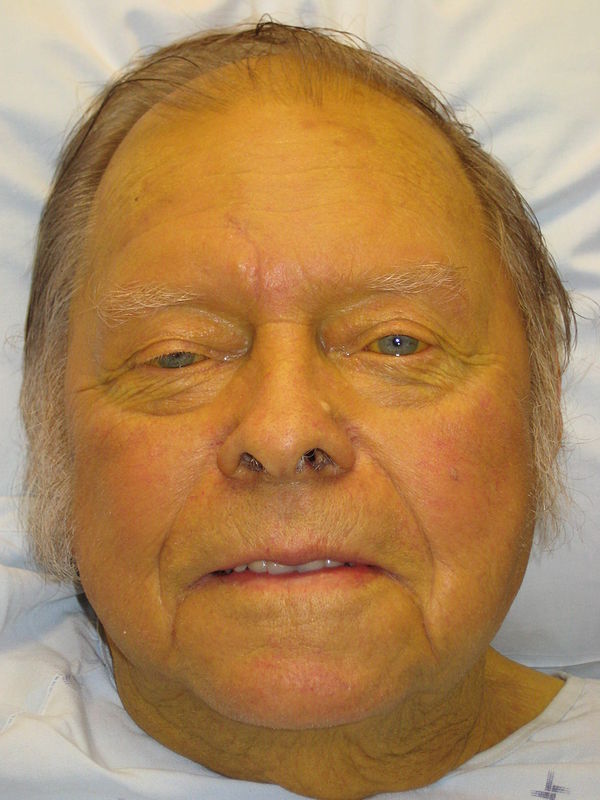
Common Causes of Jaundice in Adults and Children
Jaundice can occur due to various factors, affecting individuals of all ages. However, it’s most commonly observed in newborns and older adults. The primary causes of jaundice include:
- Liver infections (hepatitis A, B, C, D, and E)
- Drug reactions or overdoses (e.g., acetaminophen)
- Genetic disorders affecting bilirubin metabolism
- Chronic liver diseases
- Gallstones or gallbladder disorders
- Blood disorders
- Pancreatic cancer
- Pregnancy-related bile buildup
In children, jaundice may also result from congenital conditions or infections. It’s crucial to identify the underlying cause to determine the appropriate course of treatment.
Recognizing Jaundice Symptoms: Beyond the Yellow Skin
While the yellowing of skin and eyes is the most noticeable sign of jaundice, other symptoms may accompany this condition. These can include:
- Dark urine
- Pale or clay-colored stools
- Itching (pruritus)
- Fatigue
- Abdominal pain
- Nausea and vomiting
- Fever
- Weight loss
The presence and severity of these symptoms can vary depending on the underlying cause of jaundice. Monitoring these signs is crucial for early detection and timely medical intervention.

Diagnosing Jaundice: From Physical Examination to Advanced Tests
Diagnosing jaundice involves a comprehensive approach, combining physical examination with various diagnostic tests. Healthcare professionals typically follow these steps:
- Physical examination: Assessing skin and eye color, checking for liver enlargement or tenderness
- Medical history review: Discussing symptoms, medications, and potential risk factors
- Blood tests: Measuring bilirubin levels, liver function, and blood cell counts
- Imaging studies: Ultrasound, CT scans, or MRI to examine the liver, gallbladder, and bile ducts
- Liver biopsy: In some cases, to determine the extent of liver damage or identify specific liver diseases
The combination of these diagnostic tools helps healthcare providers determine the underlying cause of jaundice and develop an appropriate treatment plan.
Treatment Approaches for Jaundice: Addressing the Root Cause
The treatment of jaundice focuses on addressing the underlying condition causing the bilirubin buildup. Depending on the diagnosis, treatment options may include:
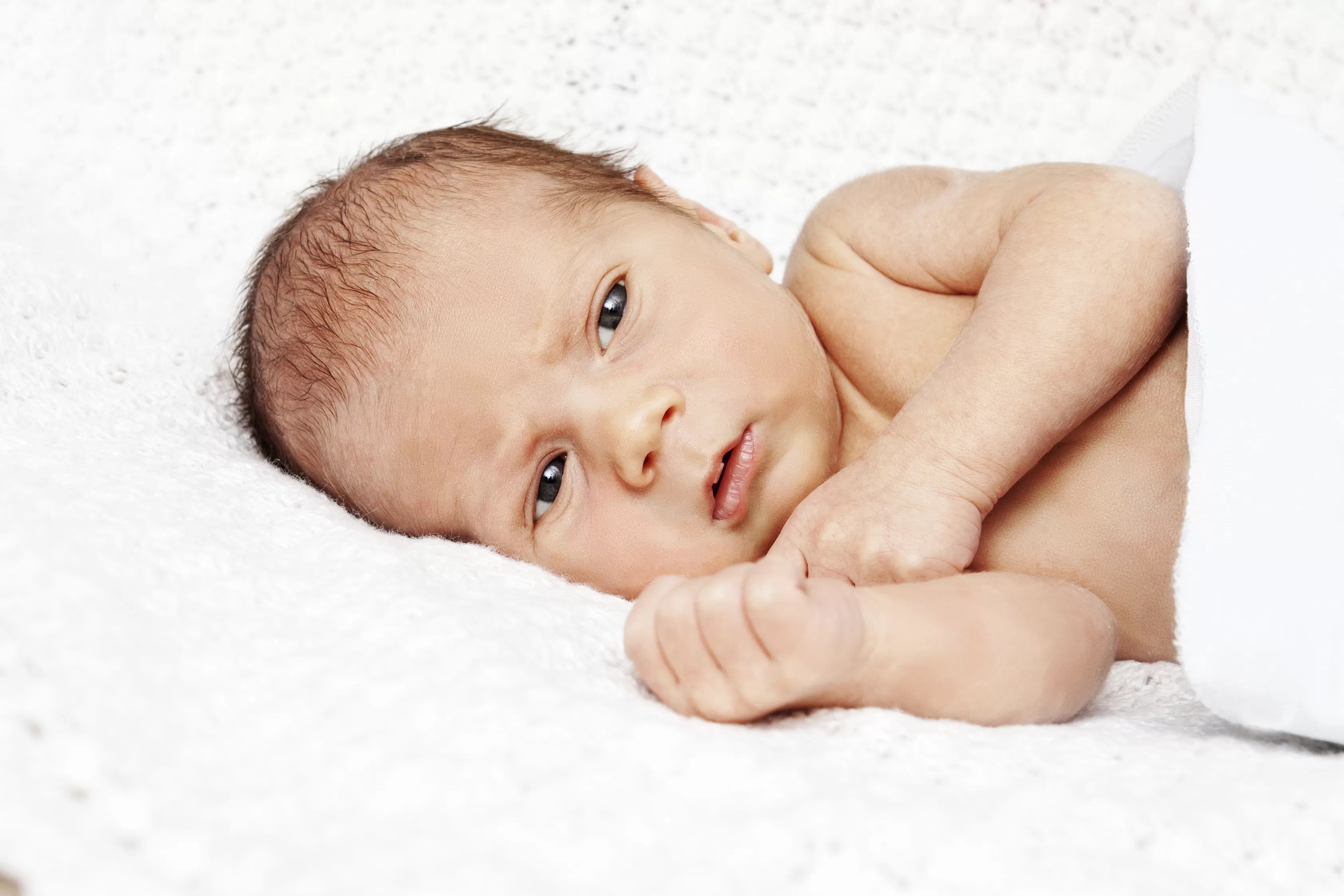
- Antiviral medications for viral hepatitis
- Discontinuation or adjustment of medications causing liver damage
- Nutritional support and lifestyle modifications for chronic liver diseases
- Surgery for gallbladder removal or bile duct obstruction
- Phototherapy for newborns with physiological jaundice
- Blood transfusions for severe anemia or hemolytic disorders
- Targeted therapies for pancreatic cancer or other malignancies
In some cases, supportive care may be necessary to manage symptoms and prevent complications while the underlying condition is being treated.
Preventing Jaundice: Lifestyle Choices and Health Precautions
While not all cases of jaundice can be prevented, certain lifestyle choices and health precautions can reduce the risk of developing conditions that lead to jaundice:
- Practicing safe sex and avoiding sharing needles to prevent hepatitis B and C
- Maintaining good hygiene and sanitation to prevent hepatitis A
- Limiting alcohol consumption to protect liver health
- Following medication dosage instructions carefully
- Maintaining a healthy diet and exercise routine
- Getting vaccinated against hepatitis A and B
- Avoiding exposure to toxic substances and chemicals
By adopting these preventive measures, individuals can significantly reduce their risk of developing jaundice-causing conditions.
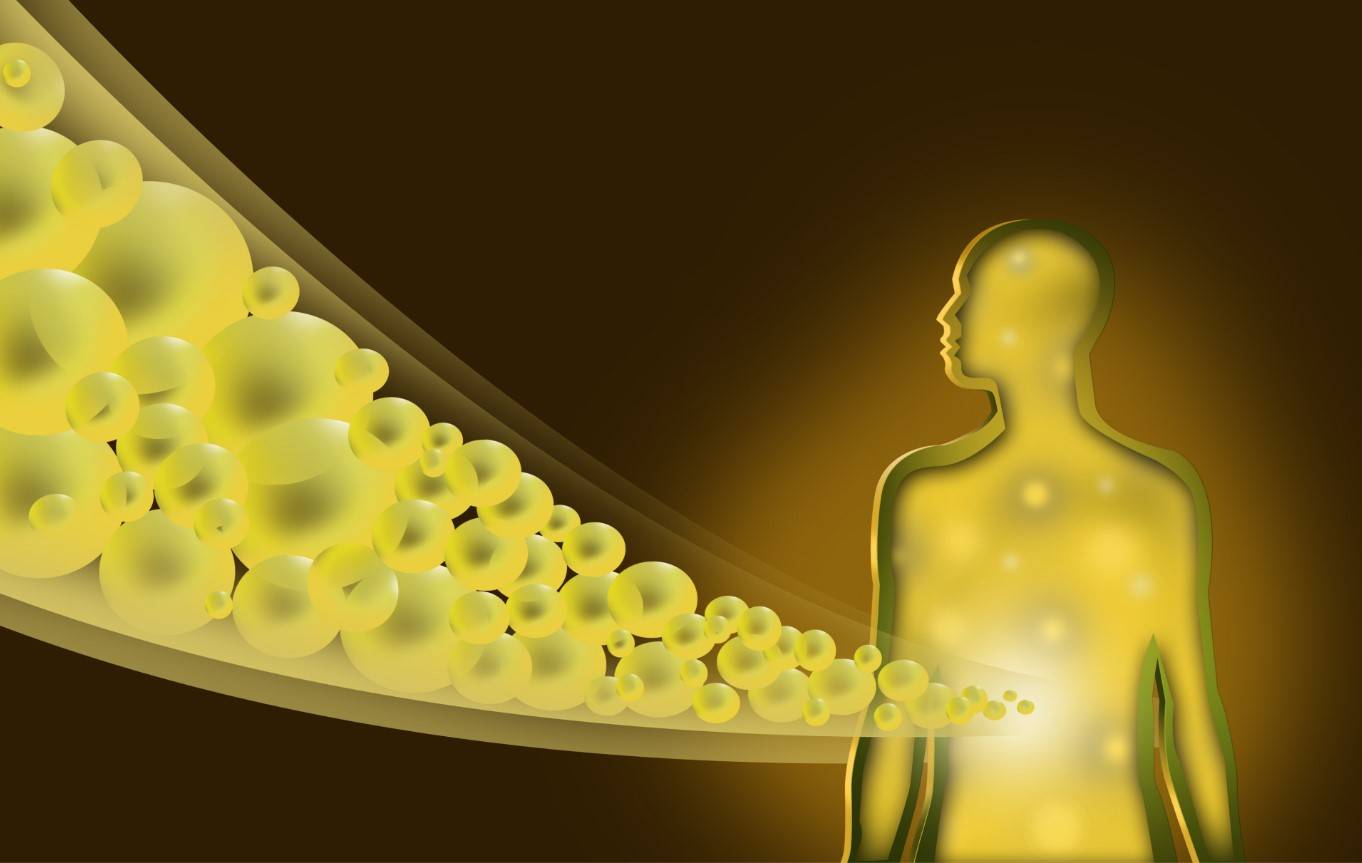
Jaundice in Special Populations: Newborns and Pregnant Women
Jaundice affects certain populations differently, particularly newborns and pregnant women. Understanding these unique considerations is crucial for proper management:
Newborn Jaundice
Physiological jaundice is common in newborns, affecting up to 60% of full-term infants. It typically occurs 2-4 days after birth and resolves within 1-2 weeks. However, prolonged or severe jaundice may indicate underlying conditions requiring medical attention.
Jaundice in Pregnancy
Pregnant women may experience jaundice due to conditions such as intrahepatic cholestasis of pregnancy or HELLP syndrome. These conditions require close monitoring and management to ensure the health of both mother and baby.
When to Seek Medical Attention for Jaundice
Jaundice often indicates a serious underlying condition, making it essential to seek medical attention promptly. Individuals should consult a healthcare provider if they experience:
- Yellowing of the skin or eyes
- Dark urine or pale stools
- Unexplained itching
- Abdominal pain or swelling
- Fever or chills accompanying jaundice symptoms
- Rapid weight loss or loss of appetite
Early intervention can prevent complications and improve treatment outcomes for jaundice-causing conditions.
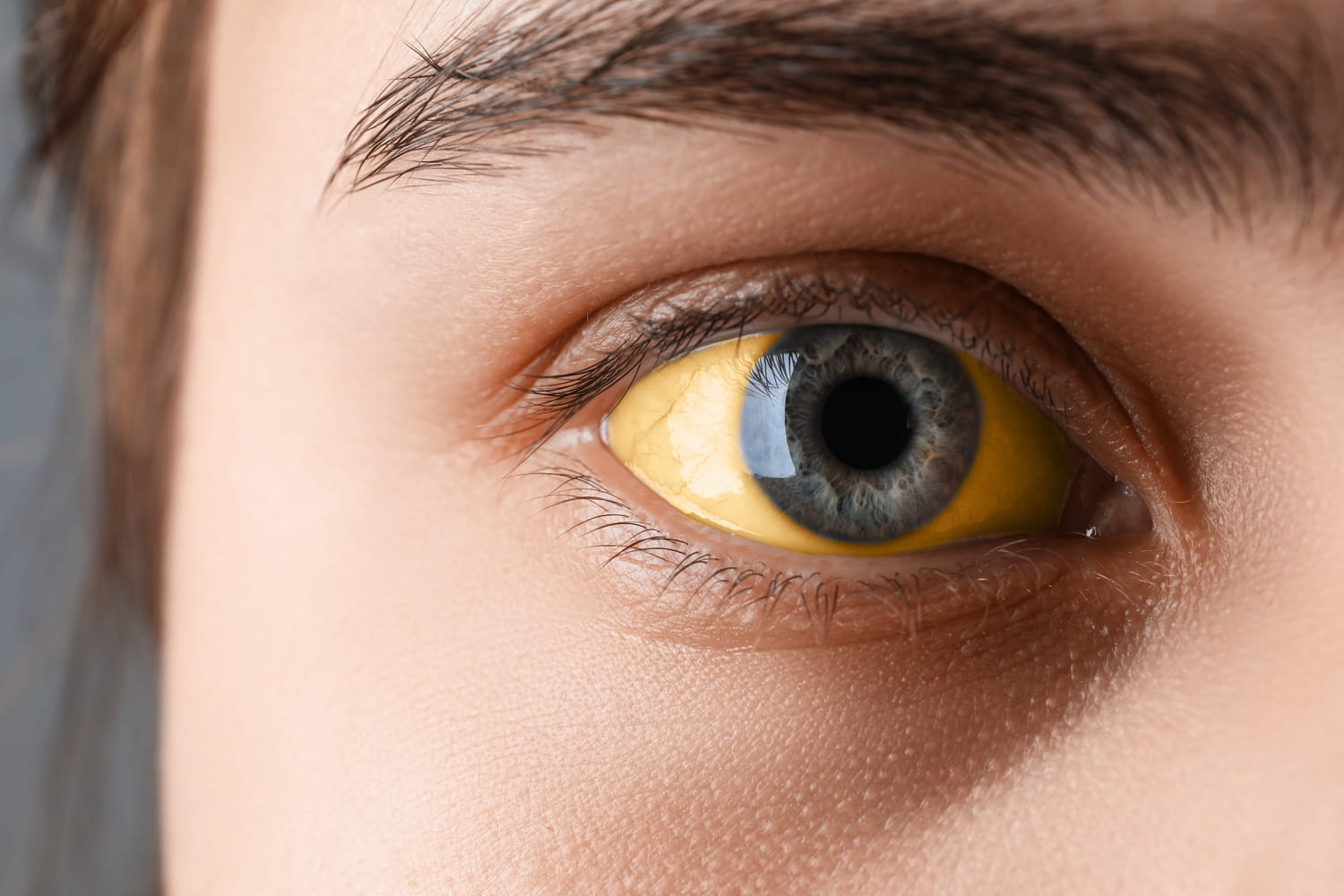
Jaundice serves as a crucial warning sign for various health issues, ranging from liver dysfunction to blood disorders. By understanding its causes, symptoms, and treatment approaches, individuals can take proactive steps to maintain their health and seek timely medical care when needed. Regular check-ups, healthy lifestyle choices, and awareness of jaundice symptoms contribute to early detection and effective management of this condition.
Jaundice causes Information | Mount Sinai
Causes of jaundice; Cholestasis
Jaundice is a yellow color in the skin, mucous membranes, or eyes. The yellow color comes from bilirubin, a byproduct of old red blood cells. Jaundice is a sign of other diseases.
This article talks about the possible causes of jaundice in children and adults. Newborn jaundice occurs in very young infants.
Jaundice is a condition produced when excess amounts of bilirubin circulating in the blood stream dissolve in the subcutaneous fat (the layer of fat just beneath the skin), causing a yellowish appearance of the skin and the whites of the eyes. With the exception of normal newborn jaundice in the first week of life, all other jaundice indicates overload or damage to the liver, or inability to move bilirubin from the liver through the biliary tract to the gut.
With the exception of normal newborn jaundice in the first week of life, all other jaundice indicates overload or damage to the liver, or inability to move bilirubin from the liver through the biliary tract to the gut.
Information
Jaundice is often a sign of a problem with the liver, gallbladder, or pancreas. Jaundice can occur when too much bilirubin builds up in the body. This may happen when:
- There are too many red blood cells dying or breaking down (hemolysis) and going to the liver.
- The liver is overloaded or damaged.
- The bilirubin from the liver is not able to properly move into the digestive tract.
Conditions that can cause jaundice include:
- Infections of the liver from a virus (hepatitis A, hepatitis B, hepatitis C, hepatitis D, and hepatitis E) or a parasite
- Use of certain drugs (such as an overdose of acetaminophen) or reactions to other medicines or or exposure to poisons (for example, poisonous mushrooms)
- Birth defects or disorders present since birth that makes it hard for the body to breakdown bilirubin (such as Gilbert syndrome, Dubin-Johnson syndrome, Rotor syndrome, or Crigler-Najjar syndrome)
- Chronic liver disease
- Gallstones or gallbladder disorders causing blockage of the bile duct
- Blood disorders
- Cancer of the pancreas
- Bile buildup in the gallbladder because of pressure in the belly area during pregnancy (jaundice of pregnancy)
Lidofsky SD. Jaundice. In: Feldman M, Friedman LS, Brandt LJ, eds. Sleisenger and Fordtran’s Gastrointestinal and Liver Disease: Pathophysiology/Diagnosis/Management. 11th ed. Philadelphia, PA: Elsevier; 2021:chap 21.
Jaundice. In: Feldman M, Friedman LS, Brandt LJ, eds. Sleisenger and Fordtran’s Gastrointestinal and Liver Disease: Pathophysiology/Diagnosis/Management. 11th ed. Philadelphia, PA: Elsevier; 2021:chap 21.
Wyatt JI, Haugk B. Liver, biliary system and pancreas. In: Cross SS, ed. Underwood’s Pathology. 7th ed. Philadelphia, PA: Elsevier; 2019:chap 16.
Last reviewed on: 7/1/2021
Reviewed by: Michael M. Phillips, MD, Emeritus Professor of Medicine, The George Washington University School of Medicine, Washington, DC. Also reviewed by David Zieve, MD, MHA, Medical Director, Brenda Conaway, Editorial Director, and the A.D.A.M. Editorial team.
Jaundice: Causes, symptoms, and treatments
A person with jaundice may notice a yellowish tinge to their skin, mucous membranes, and the whites of the eyes. It can happen with various health conditions and usually indicates a problem with the liver or bile ducts.
When the liver is not working properly, it can cause a waste material called bilirubin to build up in the blood.
With moderate bilirubin levels, a person’s skin, eyes, and mucous membranes can turn yellow. As it progresses, the color can also change from yellow to green. The green color occurs due to biliverdin, the green pigment present in bile.
Jaundice can develop in people of all ages and is normally the result of an underlying condition. Newborns and older adults have the highest likelihood of developing jaundice.
This article discusses what causes jaundice, how healthcare professionals diagnose and treat the condition, and how a person can help to prevent it from occurring. It also explores the symptoms a person can expect.
According to the American Family Physician (AAFP), jaundice is the yellowing of the skin, mucous membranes, and the whites of the eyes that occurs when the body does not process bilirubin as it should.
Bilirubin levels increase as the red blood cells naturally break down. Typically, the liver filters this waste material out of the bloodstream and turns it into a new form called conjugated bilirubin.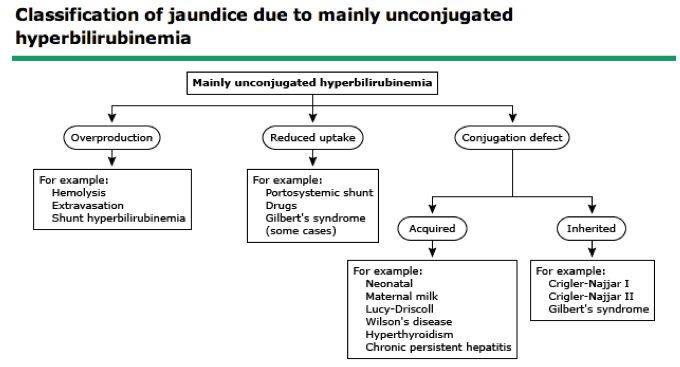 The new form then exits the body in a person’s stool.
The new form then exits the body in a person’s stool.
If there is too much bilirubin for the liver to process, it can build up in the body. This is known as hyperbilirubinemia, and it causes the yellow color in the skin and eyes.
Jaundice typically occurs due to an underlying disorder that either causes the production of too much bilirubin or prevents the liver from eliminating it.
Some possible underlying conditions and causes of jaundice include:
- side effects of certain medications
- gallstone disease
- excessive alcohol consumption
- gallbladder or pancreatic cancer
- cirrhosis, which is a disease that causes scar tissue to replace healthy tissue in the liver
- hepatitis or other liver infections
- hemolytic anemia
Treatment will depend on the underlying cause of jaundice.
Jaundice can lead to itching, or pruritis. A 2021 article notes that a person can have warm baths containing oatmeal and take antihistamines for mild pruritis.
A healthcare professional may prescribe medications for those experiencing moderate to severe pruritis, such as cholestyramine or colestipol.
As jaundice may sometimes indicate damage to the liver, a liver transplant may be necessary in some cases, depending on the severity of the injury.
Jaundice is related to liver function.
People can help take care of their liver with several lifestyle changes, such as:
- eating a balanced diet
- exercising regularly
- limiting alcohol consumption
- avoiding toxins from chemicals and other sources, both inhaled and touched
- managing medications carefully
A 2021 article also suggests:
- avoiding herbal medications without consulting a healthcare professional first
- avoiding smoking, alcohol, and intravenous drugs
- avoiding taking more than the recommended dose of prescribed medications
- getting the recommended vaccinations before traveling
- practicing safe sex, such as using barrier methods of contraception
Common symptoms of jaundice include:
- a yellow tinge to the skin, mucous membranes, and the whites of the eyes
- pale stools
- dark urine
- itchiness
In infants, the yellowish tinge can start at the head and spread down the body to the toes.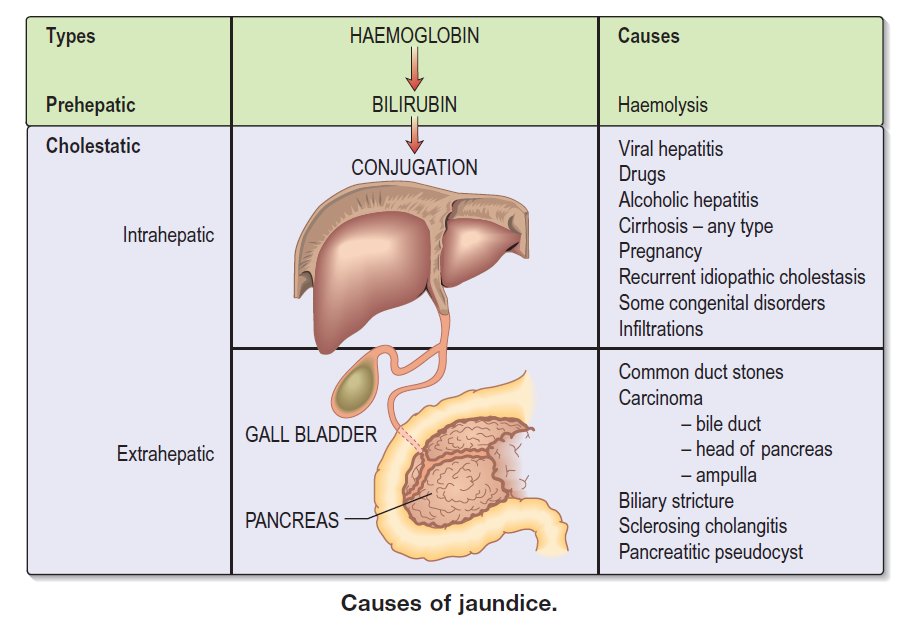
The United Kingdom’s National Health Service (NHS) notes that jaundice may be less apparent on Black and Brown skin. It is more obvious in the whites of the eyes.
Accompanying symptoms of jaundice may include:
- fatigue
- abdominal pain
- weight loss
- vomiting
- fever
High levels of bilirubin can be toxic and lead to a rare type of brain damage called kernicterus in infants.
The underlying conditions causing jaundice can also lead to their own complications.
Three main types of jaundice include:
- Prehepatic: This occurs before the liver processes the waste and results in higher unconjugated bilirubin levels.
- Hepatic: This occurs in the liver and results in both higher conjugated and unconjugated bilirubin levels.
- Posthepatic: This occurs after the liver has processed the waste and results in higher conjugated bilirubin levels.
Jaundice is a common health issue in newborn children.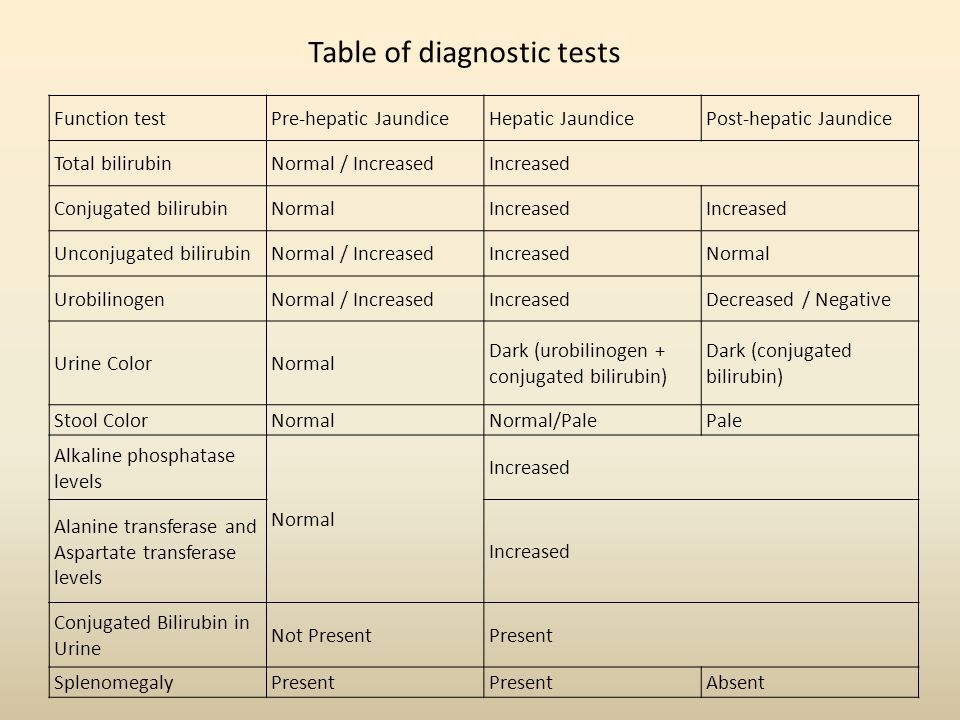
The Centers for Disease Control and Prevention (CDC) note that approximately 60% of newborns develop jaundice, and signs appear within 48 hours of birth. A doctor or nurse should examine the baby when they are between 3–5 days old. This is because the bilirubin levels are usually at their highest during this time.
Red blood cells in the body of an infant are frequently broken down and replaced. This causes the production of more bilirubin. In addition, the livers of infants are less developed and are therefore less effective at filtering bilirubin from the body.
Symptoms will usually resolve without treatment in mild cases. However, infants with extremely high bilirubin levels will require treatment with either a blood transfusion or phototherapy.
In these cases, jaundice treatment in newborns is vital to help prevent kernicterus.
Causes of jaundice in newborns
Although jaundice in babies is common and often resolves without treatment, some underlying medical conditions can cause jaundice. These include:
These include:
- underactive thyroid gland
- blood group incompatibility, when the blood of both the pregnant person and infant become mixed in the womb or during birth
- rhesus disease, a condition in which the pregnant person’s antibodies destroy the infant’s blood cells
- urinary tract infection
- a blockage in the bile ducts and gallbladder
- Crigler-Najjar syndrome, a condition that affects the enzymes that process bilirubin
Breastfeeding or chestfeeding can also increase the chance of jaundice in newborns. However, there is no need for a person to stop feeding the baby this way. In these cases, the symptoms of jaundice resolve in a few weeks.
According to a 2021 article, normal bilirubin levels are less than 1 milligram per deciliter (mg/dl).
A person has jaundice if these levels reach approximately 3 mg/dl.
A 2021 article notes that doctors may diagnose jaundice in infants if the bilirubin levels increase to 5 mg/dl per day or more than 0. 2 mg/dl per hour.
2 mg/dl per hour.
These ranges may differ between laboratories. How far above the normal range a person’s levels will help a doctor determine the best course of treatment.
Doctors will most likely start with the person’s history and a physical exam to diagnose jaundice. They may later also order lab tests.
During an examination, they will pay close attention to the abdomen, liver, and skin.
The doctor may often include lab tests to help determine the underlying cause of jaundice. These include:
- Bilirubin tests: A high level of unconjugated bilirubin compared to levels of conjugated bilirubin suggest hemolytic jaundice.
- Full blood count (FBC) or complete blood count (CBC): This measures levels of red blood cells, white blood cells, and platelets.
- Hepatitis A, B, and C tests: This tests for a range of liver infections.
The doctor will also examine the structure of the liver if they suspect an obstruction. In these cases, they will use imaging tests, including MRI, CT, and ultrasound scans.
In these cases, they will use imaging tests, including MRI, CT, and ultrasound scans.
In addition, they may carry out an endoscopic retrograde cholangiopancreatography (ERCP). This is a procedure combining endoscopy and X-ray imaging.
The AAFP states that a healthcare professional may perform a liver biopsy. A liver biopsy can check for inflammation, cirrhosis, cancer, and fatty liver. This test involves inserting a needle into the liver to obtain a tissue sample. A healthcare professional will then examine the sample under the microscope.
Jaundice is the yellowing of the skin, mucous membranes, and whites of the eyes. It is a symptom of an underlying condition or health concern that involves the liver.
It occurs when the liver cannot keep up with the demand to process waste in the blood or when the liver becomes damaged. Several conditions can cause liver issues and result in jaundice.
Treatment for jaundice typically involves treating the underlying condition.
Read the article in Spanish.
causes, types, symptoms, signs, diagnosis, treatment in children and adults
Causes
Classification
Symptoms
Diagnosis
Treatment
Complications
Prevention
Jaundice is not an independent disease, but a syndrome that manifests itself in the staining of the skin, whites of the eyes and mucous membranes in yellow. The causes of jaundice can be different, it can be a symptom of various diseases or a physiological condition that does not require treatment, such as in newborns. However, most often the appearance of this symptom means problems with the liver.
Main causes and precipitating factors
With the destruction of hemoglobin, which is part of erythrocytes – blood cells that carry oxygen to tissues, bilirubin is formed. This substance then, together with the blood, enters the liver, where it is filtered, binds to glucuronic acid and enters the bile, and then through the bile ducts enters the gastrointestinal tract and is excreted from the body along with feces.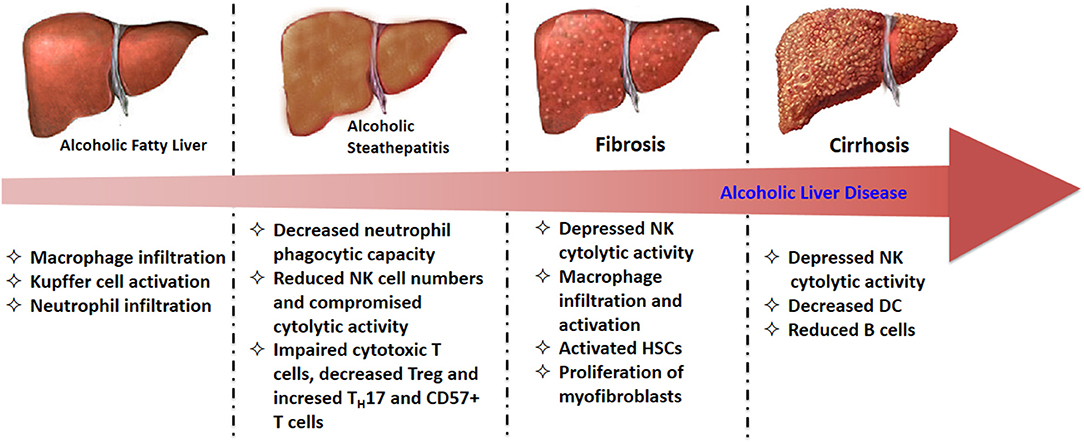 A small amount is filtered by the kidneys and excreted in the urine.
A small amount is filtered by the kidneys and excreted in the urine.
The described process occurs in a healthy body with a normal metabolism, and the level of bilirubin is maintained within the normal range. But if at some stage the elimination of bilirubin from the blood is disturbed or too much is formed due to the massive destruction of hemoglobin, its amount in the blood becomes too large. This causes a noticeable yellowing of the skin and all mucous membranes. Another name for jaundice is hyperbilirubinemia.
Also, the appearance of jaundice in adults is possible in violation of the excretion of bile from the liver – with cholecystitis, cholelithiasis, tumors. Then bilirubin can be reabsorbed into the blood, which increases its level and causes the manifestation of hyperbilirubinemia.
Other causes of hyperbilirubinemia can be:
- viral infections;
- liver tumors;
- diseases of the liver and gallbladder;
- alcohol abuse;
- complications after operations and diseases;
- long-term use of drugs;
- helminths and other parasites.

In many newborns (in half of full-term and 80% of premature babies), jaundice appears on the 2-3rd day after birth. Its cause is the immaturity of the liver, which is why the removal of bilirubin from the blood is slow. Such jaundice in newborns usually resolves on its own and does not require treatment.
Classification
Jaundice due to an increase in the level of bilirubin is called true jaundice. There is also a false one – when any dyes accumulate in the skin, for example, when carrots, oranges or drugs containing picric acid, quinacrine or other dyes are abused in the diet. These types of jaundice look similar in appearance, but their causes are radically different. The true form is usually the result of pathological processes, and the false one is the staining of only the skin, while the mucous membranes remain normal in color.
In addition, there are various forms of hyperbilirubinemia:
- Hemolytic jaundice, or suprahepatic – appears as a result of increased breakdown of hemoglobin.
 The causes are genetic pathologies – microspherocytosis, stomacytosis and others, or autoimmune hemolytic anemia.
The causes are genetic pathologies – microspherocytosis, stomacytosis and others, or autoimmune hemolytic anemia. - Parenchymal jaundice, or hepatic jaundice, occurs when the liver is damaged. Common causes are infectious diseases such as various types of hepatitis, yellow fever, mononucleosis, relapsing fever, salmonellosis, psittacosis and other diseases. From non-infectious common cirrhosis of the liver, alcoholic hepatitis, poisoning with ethylene glycol and some other chemicals.
- Obstructive jaundice, or obstructive jaundice, is manifested by blockage of the biliary tract and a violation of the outflow of bile against the background of cholangitis, the formation of cicatricial strictures of the ducts, cholelithiasis, tumors, and parasites.
- Constitutional jaundice is associated with a defect in some genes and the presence of congenital diseases – Gilbert’s, Rotor’s, Crigler-Najjar’s syndromes and others. It is not considered a pathology, it is rather a feature of the body, and treatment is not required.

- Physiological jaundice occurs in most newborns and resolves on its own, but requires medical supervision.
Symptoms
Symptoms of jaundice depend on its form and the underlying disease, so they are different. So, with hemolytic – the manifestations are insignificant, the most obvious is the yellowing of the skin and sclera, the liver may slightly increase, anemia is detected.
In the hepatic form against the background of hepatitis, there are aching pains in the liver, in the joints, weakness is felt, appetite decreases, and the temperature rises. In addition to yellowness, there are other signs: the urine becomes dark in color, and the feces, on the contrary, are too light. Intradermal hemorrhages and hematomas are formed.
With mechanical forms, for example, cholelithiasis, there is an acute pain in the right hypochondrium, radiating to the back, due to acute blockage of the bile ducts. With the development of a tumor, the pain increases gradually, at first it is dull, moderate.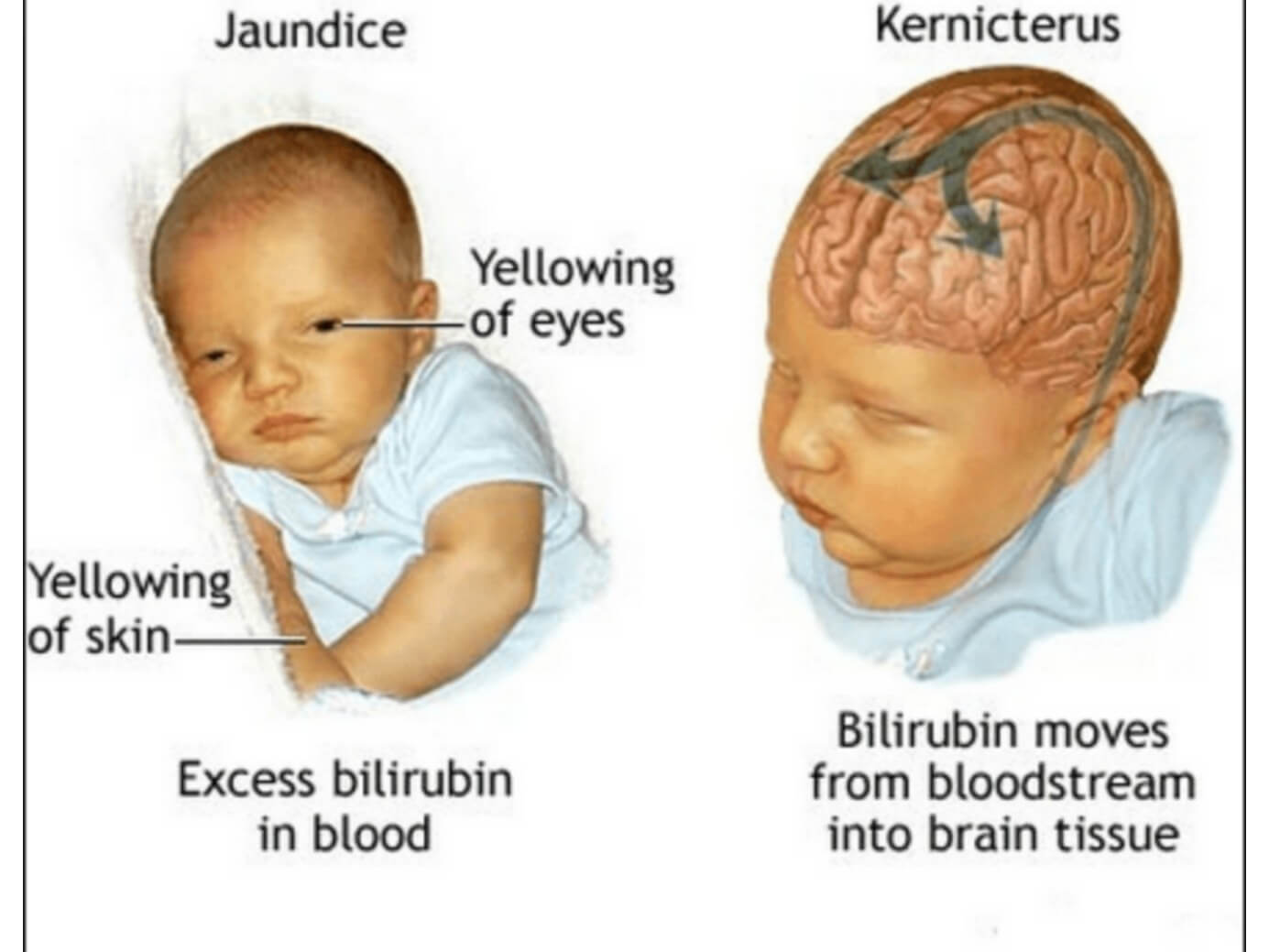 Then nausea, weakness appear, the temperature rises, yellowness increases, the urine becomes dark, and the feces become light.
Then nausea, weakness appear, the temperature rises, yellowness increases, the urine becomes dark, and the feces become light.
The main symptom of jaundice is yellowness of the skin, mucous membranes and sclera of the eyes, and the remaining symptoms depend on the underlying disease that caused hyperbilirubinemia and relate to it.
Diagnosis
To diagnose jaundice, an examination is carried out and blood biochemistry is studied, in particular, the level of bilirubin in the blood is determined, including total, direct and indirect. The content of different types of bilirubin in jaundice is different, and this allows you to clarify the diagnosis, as well as differentiate similar diseases.
Enzymes such as ALT (aspartate aminotransferase), AST (alanine aminotransferase), gamma-GT (gamma-glutamyl transpeptidase), AP (alkaline phosphatase) are detected in the blood. These tests allow you to evaluate the functionality of the liver.
The doctor also prescribes general blood and urine tests, which allows you to evaluate the content of formed elements and diagnose anemia. Blood is tested for antibodies to hepatitis, as this disease often causes liver damage.
Blood is tested for antibodies to hepatitis, as this disease often causes liver damage.
Of the other diagnostic methods used:
- Ultrasound or CT scan of the abdominal cavity – to assess the condition of the liver, gallbladder and ducts;
- liver biopsy;
- ERCP – endoscopic retrograde cholangiopancreatography – study of the bile ducts and pancreas with the introduction of a contrast agent;
- laparoscopy – surgical insertion of a probe through a puncture.
Treatment
To diagnose jaundice, adults initially turn to a therapist, and with children, to a pediatrician. However, after performing diagnostic procedures and clarifying the causes of hyperbilirubinemia, treatment is carried out by other specialized specialists: an infectious disease specialist, an oncologist, a hematologist, a gastroenterologist, and a surgeon. Jaundice itself is only a symptom of one of the diseases, after the identification of which its therapy begins.
Accordingly, there is no point in treating jaundice without identifying its cause. The underlying disease is treated, and the yellowing of the skin and mucous membranes disappears after the normalization of bilirubin metabolism.
Complications
Although outwardly jaundice is manifested only by a change in the color of the skin and mucous membranes, its root cause is an increase in the level of bilirubin in the blood. It has a toxic effect on the central nervous system, foci of necrosis can form in the liver and kidneys, anemia appears, and cellular immunity decreases.
If no measures are taken to stabilize bilirubin, jaundice in children can lead to serious consequences – the development of mental retardation, cerebral palsy. In adults, the consequences of jaundice can manifest themselves in the defeat of various organs.
Prevention and prognosis
Since hyperbilirubinemia is only a symptom of other diseases, prevention comes down to preventing the diseases that cause it.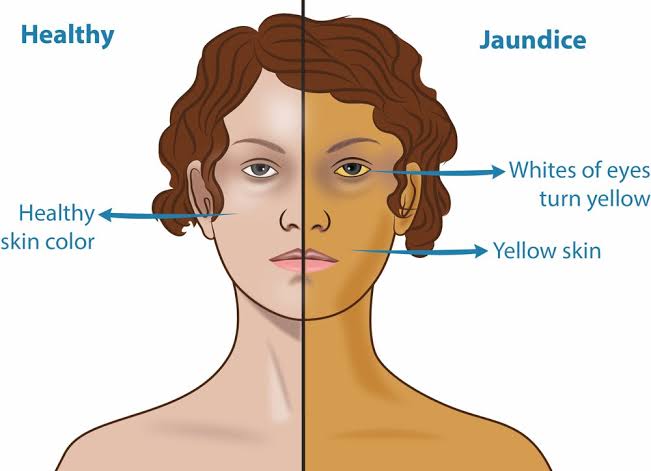 First of all, these are various types of hepatitis, including hepatitis A, which is common in Africa, Asia, South America, which should be remembered by travel lovers. Also, preventive measures should include a healthy lifestyle, avoidance of alcohol, timely medical examinations and treatment of identified diseases.
First of all, these are various types of hepatitis, including hepatitis A, which is common in Africa, Asia, South America, which should be remembered by travel lovers. Also, preventive measures should include a healthy lifestyle, avoidance of alcohol, timely medical examinations and treatment of identified diseases.
The prognosis depends on the underlying disease. So, physiological jaundice in children is not dangerous and goes away by itself without treatment, and if the cause is cirrhosis of the liver or oncology, then the outcome can be fatal.
However, prolonged exposure to bilirubin on the body has a negative effect and can lead to disruption of many organs, especially the nervous system. Therefore, at the first signs of jaundice, you should immediately consult a doctor to find out the causes of hyperbilirubinemia and begin treatment.
The author of the article:
Ivanova Natalya Vladimirovna
therapist
reviews leave a review
Clinic
m. Sukharevskaya
Sukharevskaya
Services
- Title
- Primary appointment (examination, consultation) with a gastroenterologist2300
- Repeated appointment (examination, consultation) with a gastroenterologist1900
- Primary appointment (examination, consultation) with general practitioner2300
- Repeated appointment (examination, consultation) with a general practitioner1900
Health articles
All articlesAllergistGastroenterologistHematologistGynecologistDermatologistImmunologistInfectionistCardiologistCosmetologistENT doctor (otolaryngologist)MammologistNeurologistNephrologistOncologistOphthalmologistProctologistPsychotherapistPulmonologistRheumatologistTraumatologist-orthopedistTrichologistUrologistPhlebologistSurgeonEndocrinologist
Our doctors
Specialization of the doctorAllergistAndrologistAnesthetistPediatrician house callPaediatrician house callGastroenterologistHematologistGynecologistBreastfeedingDermatologistPediatric allergologistPediatric gastroenterologistPediatric gynecologistPediatric dermatologistPediatric infectious disease specialistPediatric cardiologistPediatric ENT specialistPediatric chiropractorPediatric massagePediatric neurologistPediatric neurologist phrologistPediatric oncologistPediatric osteopathPediatric ophthalmologistPediatric psychiatristPediatric traumatologistPediatric urologistPediatric surgeonPediatric endocrinologistPediatric departmentDietologistImmunologistInfectionistHeadache roomCardiologistCosmetologistENT doctor (otolaryngologist)MammologistManual therapistMassageNarcologistNeurologistNeurologistNephrologistOncologistOperational unitOsteopathOt department of pediatrics m. TherapistTraumatologist-orthopedistTrichologistUltrasound (ultrasound examination)UrologistPhysiotherapistPhlebologistSurgeonSurgical operations under the compulsory medical insurance policy of the Moscow RegionEndocrinologistAesthetic gynecologyClinics. Smolensk. Taganskaya. Street 1905 years. Red Gates. AvtozavodskayaPharmacy. Glades. Sukharevskaya. st. Academician Yangelam. Frunzenskaya Zelenograd
TherapistTraumatologist-orthopedistTrichologistUltrasound (ultrasound examination)UrologistPhysiotherapistPhlebologistSurgeonSurgical operations under the compulsory medical insurance policy of the Moscow RegionEndocrinologistAesthetic gynecologyClinics. Smolensk. Taganskaya. Street 1905 years. Red Gates. AvtozavodskayaPharmacy. Glades. Sukharevskaya. st. Academician Yangelam. Frunzenskaya Zelenograd
Zhigunenko Oksana Konstantinovna
gastroenterologist, therapist
reviews
Make an appointment
Clinic
m. Red Gate
Nikitina Olga Ivanovna
general practitioner, gastroenterologist, KMN
reviews
Make an appointment
Clinic
m. Street 1905 Goda
Matveeva Yulia Evgenievna
gastroenterologist, endoscopist
reviews
Make an appointment
Clinic
m. Sukharevskaya
Sukharevskaya
Velikolug Konstantin Aleksandrovich
endoscopist, gastroenterologist, doctor of medical sciences
reviews
Make an appointment
Clinic
m. Sukharevskaya
Kushnir Maria Vadimovna
gastroenterologist
reviews
Make an appointment
Clinic
Zelenograd
Dobrovolskaya Olga Nikolaevna
ultrasound doctor, gastroenterologist
reviews
Make an appointment
Clinic
m. Sukharevskaya
Gabulova Natalia Nikolaevna
gastroenterologist
reviews
Make an appointment
Clinic
m. Taganskaya
Gusenova (Magomedrasulova) Asiyat Vazirovna
gastroenterologist
reviews
Make an appointment
Clinic
m. Frunzenskaya
Frunzenskaya
Peleneva Ekaterina Sergeevna
gastroenterologist
reviews
Make an appointment
Clinic
m. Sukharevskaya
Filippova Guzel Faritovna
gastroenterologist
reviews
Make an appointment
Clinic
m. Ulitsa 1905 Goda
Jaundice in adults: causes and treatment
Jaundice in adults is manifested by the appearance of a characteristic shade of the skin, mucous membranes and eyeballs. Such symptoms are explained by an excessive concentration of bilirubin in the body. It can be caused by various pathological processes. If bilirubin is not excreted from the body, its content in the blood rises. The most common jaundice is caused by viral infections, that is, hepatitis. Diagnostics, which includes a series of laboratory tests, allows you to determine the type of virus.
Symptoms and causes of the disease
In addition to yellowness of the skin and eye sclera, other manifestations are also observed. This is darkening of urine, loss of appetite, allergic reactions, venous network on the abdomen, pulling pains. A common cause of jaundice is liver disease. Symptoms may vary depending on the nature of the pathology. This can be infection with parasites, neoplasms, complications after surgery, and so on.
Types of jaundice
For effective treatment, it is important to accurately determine the cause of jaundice.
The conjugation form of the disease is typical for infants. In an adult, it may appear due to congenital anomalies or toxic effects on the body (for example, with prolonged use or overdose of medications).
The hemolytic form of jaundice develops as a complication of other diseases, due to the rapid destruction of red blood cells and the difficulty in removing bilirubin. For example, this form of jaundice threatens patients with leukemia, anemia, and malaria.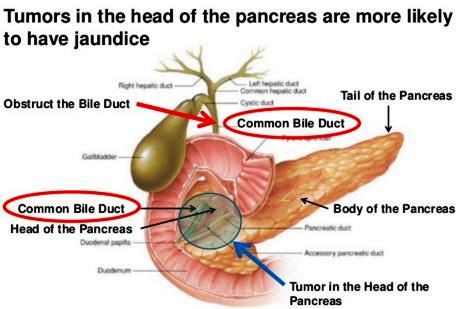
Parenchymal jaundice is characterized by damage to the liver tissue. Violated the functionality of cells, the performance of the liver as a whole. This form of jaundice can be provoked by cirrhosis of the liver or infection with viral hepatitis. Its difference from other types of the disease is the formation of spider veins and a reddish tint of the skin.
Obstructive jaundice occurs if the ducts are blocked by stones or neoplasms, and the outflow of bile is disturbed.
Accurate diagnosis – correct treatment
When clinical symptoms appear, it is necessary to urgently consult a doctor in order to establish an accurate diagnosis, the cause of the pathology and begin treatment. Without timely treatment, the pathological process can become irreversible, and the only chance to save a life will be a liver transplant. The survey plan is drawn up on an individual basis. In most cases, it includes blood biochemistry, bilirubin testing, and liver tests. When a neoplasm is detected, a biopsy is prescribed. Also, the doctor may need the results of tests for liver enzymes, as well as other laboratory and instrumental studies, to establish an accurate diagnosis.
When a neoplasm is detected, a biopsy is prescribed. Also, the doctor may need the results of tests for liver enzymes, as well as other laboratory and instrumental studies, to establish an accurate diagnosis.
Treatment is prescribed only after establishing the exact cause of the violation of bilirubin metabolism. In most cases, this is conservative therapy. Surgery is an organ transplant. Drug treatment is aimed at preserving liver function, preventing the development of cirrhosis. If the cause of jaundice is a viral infection, it is important to protect the environment of the patient from infection. The main goal of therapy is to stop the pathological process. With adequate treatment, the liver is able to restore its functionality in the future.
An important point in the treatment is diet. A diet that makes it possible to reduce the load on the liver, but at the same time contains the necessary amount of nutrients, the doctor develops for each patient individually.

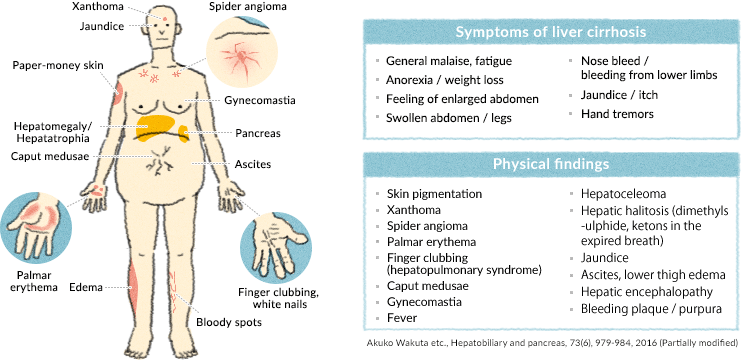
 The causes are genetic pathologies – microspherocytosis, stomacytosis and others, or autoimmune hemolytic anemia.
The causes are genetic pathologies – microspherocytosis, stomacytosis and others, or autoimmune hemolytic anemia.